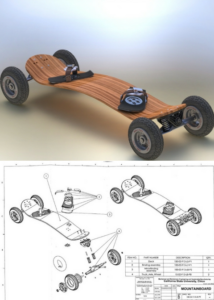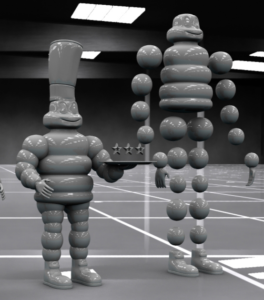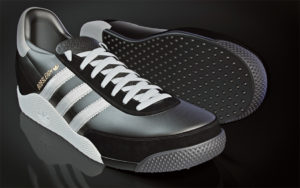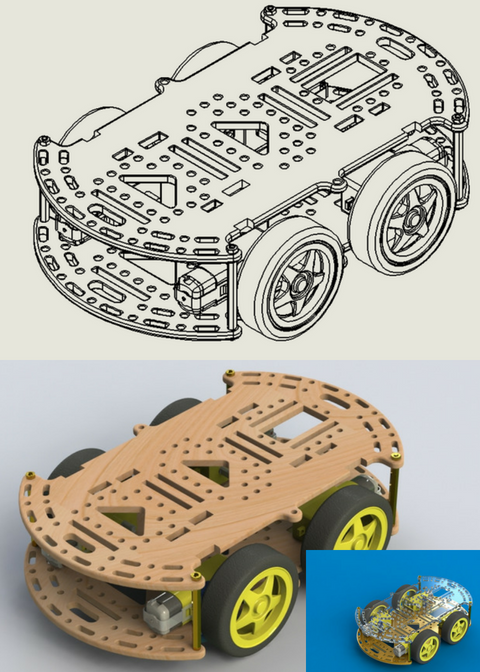To understand what “product design” is, let’s start by examining the term through the lens of language and take a look at the meanings of the two words from which it is constructed. The general definition of a “product” is an artifact or object created by someone or a process. Many times this object is also a commodity made available for purchase. On the other hand, a “design” is a plan or work-in-progress produced to demonstrate the look and function of an object. Designing an object means the process of creating that particular item to the satisfaction of the designer.
 Another thing to remember is for a very long time in human history the term “product” was associated with a physical object that you could touch, hold, smell, or even eat. Thanks to technology and the rapid development of the computer industry, however, a product can also represent something abstract, something we often refer to as digital. When people say they want to purchase a song, for example, it no longer always means they are in the market for a CD, but they can still buy a collection of digital audio files that produce sounds when played on a digital music player. The same thing applies to smartphone applications, digital books, or websites.
Another thing to remember is for a very long time in human history the term “product” was associated with a physical object that you could touch, hold, smell, or even eat. Thanks to technology and the rapid development of the computer industry, however, a product can also represent something abstract, something we often refer to as digital. When people say they want to purchase a song, for example, it no longer always means they are in the market for a CD, but they can still buy a collection of digital audio files that produce sounds when played on a digital music player. The same thing applies to smartphone applications, digital books, or websites.
When the two words – product and design – are put together into a single phrase, the combination creates a broad concept which represents two separate meanings:
- Product Design as a noun: When used as a noun, the term most likely refers to the object in discussion itself. Put simply, this is the design of a product. It is comprised of the detailed specifications of the object and how each part is supposed to function. An effective product design must take into account not only the form factor but also how its physical properties serve the product’s intended purpose as a whole. In nearly all cases, just being functional is not enough, as the product must meet the requirements for safety, efficiency, and reliability. If the object to be sold, it has to be aesthetically attractive for potential consumers too.
- Product Design as a verb: It also makes a lot of sense to use the term as a reference to the process involved in creating the design of a product. Instead of focusing on the object, the discussion revolves around the series of activities that lead to the creation process, including compilation of ideas, evaluations, visualization, building prototypes, market research, revisions, and development. The combination of aesthetic appeal, functionality, practicality, maintenance, and price point often becomes the determining factor of success.
It’s safe to say that “product design” as a noun is most often used in discussion about an object by consumers, while its use as a verb most likely occurs among manufacturers. The boundaries aren’t always clear, however, and there’s always a possibility of overlap between the two practices. If you are a product maker or at least involved in the manufacturing part of it, you understand the meaning and scope of product design both as a process and the result of that process (as opposed to just the latter), so you have the foundations to come up with an efficient, financially-viable course of action to follow through when it comes to product creation.
Essential Elements of Product Design
 While consumers and makers have different perspectives toward product design, they have more or less the same end goal: enjoying a product that is functional and aesthetically pleasing. Another important consideration is the financial aspect. Users want to purchase something that is reasonably priced, so the creator must come up with a systematic approach to keep the expense from the manufacturing process (including design) as low as possible, without sacrificing quality. Low production cost opens the door to better profit margins and high sales, hence sustainable creative efforts on the manufacturer’s part.
While consumers and makers have different perspectives toward product design, they have more or less the same end goal: enjoying a product that is functional and aesthetically pleasing. Another important consideration is the financial aspect. Users want to purchase something that is reasonably priced, so the creator must come up with a systematic approach to keep the expense from the manufacturing process (including design) as low as possible, without sacrificing quality. Low production cost opens the door to better profit margins and high sales, hence sustainable creative efforts on the manufacturer’s part.
In an attempt to deliver an efficient product design, there are some essential elements every designer cannot afford to exclude:
- Process: This is how things get done. A manufacturer needs to develop a systematic approach for proper research, technologies, expertise, and experience complemented by all the necessary tools to complete every task within the set parameters including time frame, quality, quantity, and budget.
- Tools: Always use the right tool for the job. In the scope of product design, the tools can be simple drawing pencils to sophisticated 3D modeling software. Instruments and data required for market and consumer research also fall under this category.
- Sustainability: While it is possible to create a product that perfectly serves the current trend and time, every product designer needs to have a forward-thinking mindset. Product design is its most successful when there is a clear path for potential progress. There is always room for improvement, no matter how small.
- Growth: A sustainable product design encourages constant development. Let’s not forget that there will be competitors in the market too, so it only makes sense if the entire process to create the product gives it a competitive advantage when it hits the market.
When those elements are incorporated together in the right way, the result of the design process has the potential to give consumers a product that meets all the major requirements:
- Function: A product is only as good as how well it functions. A pair of shoes, for example, has to provide protection and comfort. Keep in mind that some products have to serve multiple purposes. A car is no longer considered just a vehicle to take you from point A to B. It also needs to have storage space and comply with all safety regulations.
- Aesthetics: As the market becomes flooded with similar products, it’s no longer sufficient to compete on functionality alone. Consumers want aesthetically appealing or sometimes unique looking products. They want something different, and it doesn’t matter if the difference is only cosmetic.
- Experience: In addition to function and appearance, consumers want products that are easy to use. They don’t expect to go through a learning curve to figure out how a product works. This is the main reason why the design of the computer keyboard or the position of a car’s foot pedals are still largely the same throughout the decades.
- Emotional Appeal: Some products make people feel rich, while others allow them to gain an instant sense of confidence. Designs that have historical significance may even make consumers feel smart or patriotic. The market is filled with buyers of different backgrounds and personal preferences, which makes market research a crucial task in product design process.
 As a rule of thumb, product designers must be willing to stand in consumers’ shoes. Before designers start to compile ideas and build prototypes, they must determine who their target consumers are. Depending on the product category, the target consumers can be one or more specific groups of end users, determined based on age, educational backgrounds, geographical locations, etc. This process allows designers to narrow down the initial broad product concept and conclusively decide the most appropriate approach to take. When target consumers are identified, designers can focus on setting and fulfilling specific design parameters.
As a rule of thumb, product designers must be willing to stand in consumers’ shoes. Before designers start to compile ideas and build prototypes, they must determine who their target consumers are. Depending on the product category, the target consumers can be one or more specific groups of end users, determined based on age, educational backgrounds, geographical locations, etc. This process allows designers to narrow down the initial broad product concept and conclusively decide the most appropriate approach to take. When target consumers are identified, designers can focus on setting and fulfilling specific design parameters.
Product Design vs. Industrial Design
 On the consumers’ side, design is one of the most important features of a product. A lot of consumers think of a “design” simply as the way an object looks and feels, but in reality it goes beyond those aesthetic values. Whereas for the designers, the process of coming up with a product that meets consumer expectations has an equally great importance as the product itself.
On the consumers’ side, design is one of the most important features of a product. A lot of consumers think of a “design” simply as the way an object looks and feels, but in reality it goes beyond those aesthetic values. Whereas for the designers, the process of coming up with a product that meets consumer expectations has an equally great importance as the product itself.
Designers who deal mostly with industrial design work have the obligation to consider a long list of factors in relation to the manufacturing process. Industrial design and product design are essentially the same thing, except for one little detail: the former focuses on creating a product meant to be mass-produced by a manufacturer. The implication is that the approach to industrial design becomes slightly different too.
The most noticeable distinction is that industrial designers need to work closely in collaboration with the manufacturer, as opposed to product designers who intend to create products on a non-industrial scale. Industrial design considerations must include the manufacturer’s capability of acquiring (or fabricating) materials, production capacity, as well as standards or regulatory aspects. Additionally, the designers may also specify some intended after-sale services such as the availability of replacement parts, repairability, or rectification for manufacturing defects. The major benefits of industrial design is that designers can save on production cost – thanks to bulk manufacturing – which translates to affordability on the part of consumers and larger profit margins which then can be used for developing new products.
Whether you’re seeking consumer or industrial product design services, Cad Crowd is here to help. Through our database of vetted and skilled freelancers from around the world, you’re guaranteed to receive the quality you’re looking for. Get a free quote and get started today!
